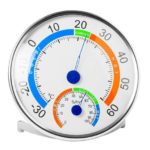Professionally dry cleaning clothes can be time consuming and expensive. So much so, that more and more people are choosing to dry clean clothing at home!
But how do you dry clean laundry in the house and what materials really need to be dry cleaned?
There are multiple ways you can dry clean clothes at home, and you can find out what you need to do below.
Things to Know Before Dry Cleaning Clothes at Home
What is dry cleaning?

Dry cleaning, in traditional terms, is when you take your clothes to a professional cleaning service, and they clean your items with chemical solvents instead of using water and detergent.
The process itself doesn’t take too long to carry out, but because dry cleaning stores can get quite busy, you occasionally have to wait a few days for your laundry to complete the entire dry cleaning process.
In response to this, a lot of people are choosing to dry clean their clothes at home these days. And not only does it work out quicker, but it can also be less hassle and can be cheaper.
However, the type of “dry clean” people do at home isn’t necessarily the same as the kind of “dry clean” you’d get at a specialised cleaners.
Some methods used at home to dry clean laundry can be quite different, and they typically resemble more traditional cleaning methods. Namely, you use detergent and water to dry clean the laundry!
Whereas clothes that are professionally dry cleaned go through an actual “dry cleaning” process, whereby the clothes are tagged, pre-treated, cleaned with a chemical solvent in a big machine, post-treated, and are then pressed and packed ready for collection.
There are, of course, specialised dry cleaning kits you can purchase to dry clean your clothes at home. And they are similar to the professional dry cleaning method. But not exactly the same!
You can find out more about how dry cleaning works here in the UK by reading our post.
What’s the difference between ‘Dry Clean’ and ‘Dry Clean Only’?
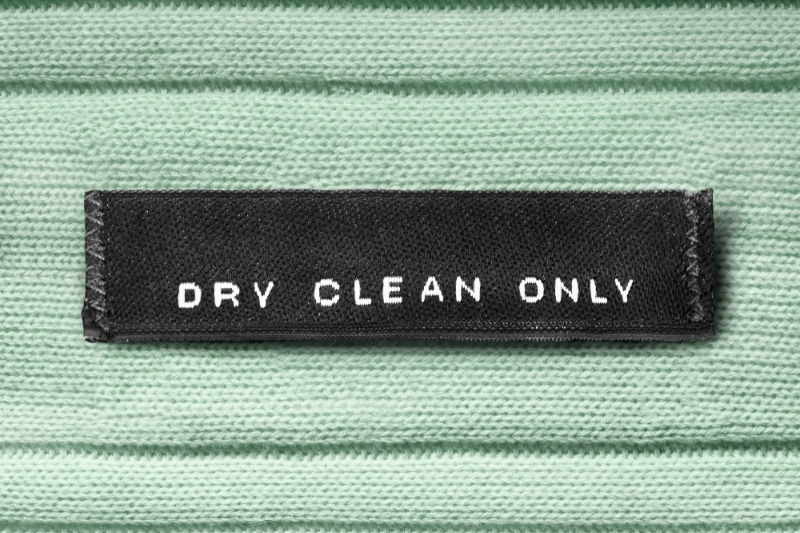
There’s a little debate regarding the actual difference between ‘dry clean’ and ‘dry clean only’. Here are some points to think about:
A lot of people see the words ‘dry clean’ and ‘dry clean only’ on clothes tags and they take these words very seriously. So much so, that these clothes are taken to a dry cleaners and are cleaned professionally when they get dirty.
There’s usually no question about trying to dry clean these items at home, and for these individuals professional cleaning is the only way forward.
Then there are other people who think that if an item’s tag says ‘dry clean‘ rather than ‘dry clean only‘, you can dry clean the garment at home. It is risky, but if you’re careful, you should be able to clean the clothes to a good standard.
However, many believe that if a label says ‘dry clean only‘ you should stick to what the tag says and take the clothes to a professional cleaner.
There are, of course, some individuals who completely disregard this information, and wash their dirty laundry in whatever way they see fit.
So, what should you do?
If ever you are in doubt about washing an item that’s labelled as ‘dry clean’ or ‘dry clean only’, you should follow your gut instinct and take the laundry to a dry cleaners.
Cleaning your items according to the information on their tags is one way of making sure that you don’t ruin them. And it’ll also give you a peace of mind.
However, if you feel more confident and are happy to take a risk, you could dry clean clothes that are labelled as ‘dry clean’ at home.
But you must use cold water, and you need to use a delicate detergent to dry clean these items. A detergent that is packed full of chemicals is going to cause more damage than anything else.
You should, however, avoid dry cleaning laundry that stipulates ‘dry clean only’ at home. If you do clean these finer garments, you’ll probably ruin the delicate material beyond repair, most likely by shrinking the fabric. This could work out very costly for you!
What materials should always be dry cleaned?
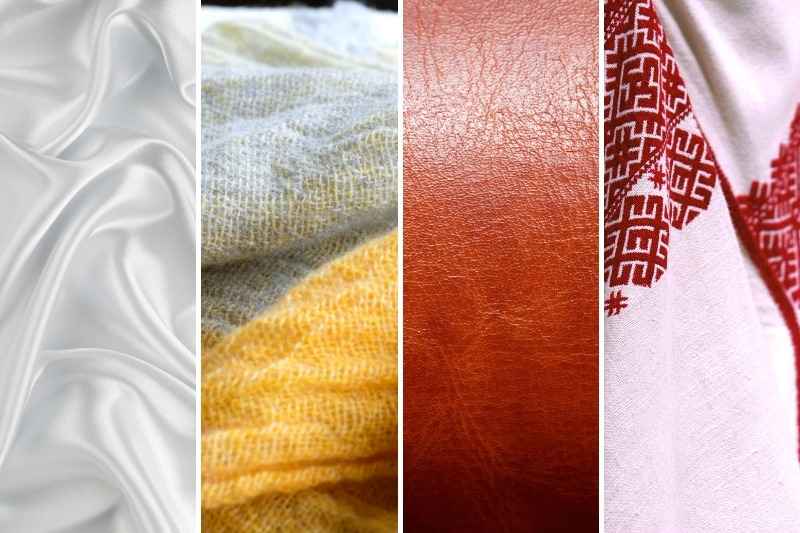
You’ll be glad to hear that most materials don’t have to be dry cleaned, and can be cleaned with some detergent and water in a washing machine.
However, the following materials should usually be dry cleaned:
- Silk
- Wool
- Cashmere
- Suede
- Viscose
- Leather
- Rayon
- Any clothes with embroidery
- Any clothes made up of intricate designs
Note: Silk can be washed on a cold/‘hand wash’ cycle in a washing machine, but it’s preferable to hand wash it.
Some tips to remember when dry cleaning laundry at home
Here are a few points to think about before and during your home dry cleaning session:
- Always read clothes tags to find out how you should be cleaning the items.
- Perform a patch test before you start dry cleaning – blot a wet piece of cotton wool on a discreet patch of clothing. If the cotton wool ball picks up the dye from the item, you should take the item to a professional cleaners to dry clean it. If nothing happens, continue with the methods you’ve chosen to follow.
- ‘Dry clean only’ really means that you need to take your item to a professional cleaner.
- When an item has ‘dry clean‘ written on its tag, it should only be washed in cold water.
- Use special detergents when cleaning ‘dry clean’ clothes – silk-friendly cleaners for silks and wool-friendly detergents for wool, for example.
- Try to avoid chemical-heavy detergents because they can aggravate delicate materials.
- Lay clothes out flat to dry them, particularly clothes made of wool, or line dry laundry as quickly as possible.
- Pre-treat stains before the actual dry clean begins, this’ll give you the best chance of thoroughly removing the stain – try blotting the stain with some specialised delicate detergent or steam clean items with a handheld steamer.
- Wash similar colours together.
- Wash similar materials together.
- Clean the bucket and any surfaces you’re likely to come into contact with during the dry cleaning session – stops dirt from spreading onto clean laundry.
DIY Dry Cleaning Method 1: Dry Cleaning Kit
To give your dirty clothes a dry clean finish you could use a dry cleaning kit. This is one of the simplest and most cost effective ways of dry cleaning clothes at home.
It also bears some resemblance to the professional cleaning process too. Which, in turn, might be safer for your laundry.
Check out the dry cleaning kit below for inspiration.
Dryel At-Home Dry Cleaning Starter Kit
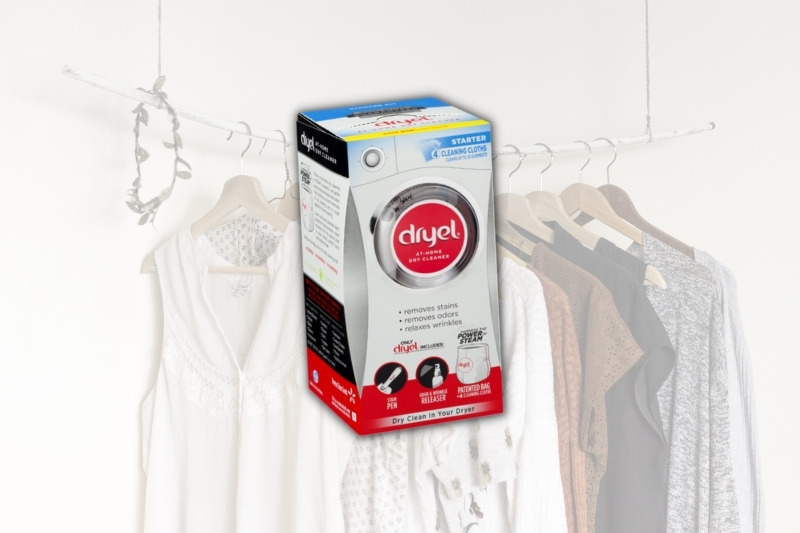
Dryel’s Dry Cleaning Kit is the ideal kit that’ll help get your dry cleaning sessions off to a good start! It’s extremely simple to use, it’s relatively cheap to get hold of, and you can get results in mere minutes.
All you need to do to activate the dry cleaning power of this kit is:
- Pre-treat stains with the Dryel pen that comes in the pack.
- Add the ‘dry clean’ garments to the Fabric Protection Bag that comes in the pack.
- Pop a Dryer Activated Cleaning Cloth into the bag as well.
- Put the bag in the tumble dryer for 15 minutes on a medium heat.
- Once the dryer has finished, remove the bag, take out the items, give them a shake and hang them up.
The agitation and heat from the dryer helps to activate the Cleaning Cloth and patented Fabric Bag’s powers, and, in turn, your laundry gets steam cleaned. It’s a very straightforward process that requires very little effort from the user.
Pros of using a dry cleaning kit
- Relatively inexpensive in comparison to professional dry cleaning shops.
- Easy to use.
- The kit’s usually come with several cloths, so you get plenty of dry cleans out of a box.
- Leaves laundry smelling fresh.
- Clothes can be mostly wrinkle-free by the end.
- There are plenty of kits available to buy.
- No need to wait around for clothes to be pro-cleaned, you can get the same effect in minutes.
Cons of using a dry cleaning kit
- They don’t always get tough stains out of clothes.
- Some users give mixed-results on how effective dry cleaning kits are.
- You must always check the small print – the kit you’re using might not be suitable for the material you’re trying to dry clean.
DIY Dry Cleaning Method 2: Hand Washing “Dry Clean” Clothes
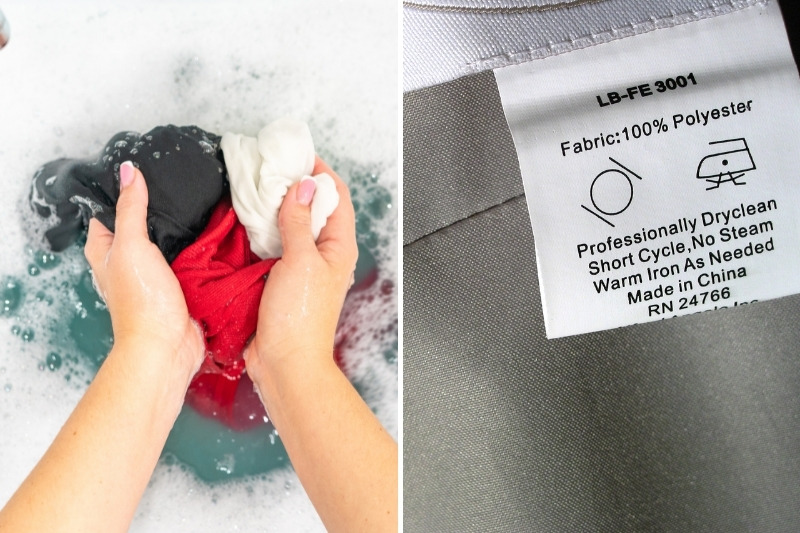
This method can be used to dry clean any material, but it is most suitable for delicate materials like silks, linen, and protein-based materials, like wool.
Steps to follow:
- Read the tag on the item you want to dry clean.
- Do a patch test to check that you can actually dry clean the item of clothing – dab a piece of material with a wet cotton wool ball.
- If no dye runs onto the woollen ball, proceed with this method. If some dye has run, stop and take your item to an actual dry cleaners.
- Fill a bucket with cold water.
- Add a small amount of specialised delicate detergent to the water.
- Pop your clothes into the water.
- Submerge the items.
- Agitate the items very slowly and gently with your hands – no scrubbing and rubbing hard.
- Don’t rush this process, but try to keep it as short as possible – delicate materials are likely to get damaged when they are exposed to lots of water. For example, woollen fibres typically matt together when they’ve been sitting in water for too long.
- Remove and rinse the garments.
- Lay wool-based garments flat out on a surface to dry, and hang linen and silk up on a line to air dry them.
Note: Heat shrinks wool, so don’t put these items in a tumble dryer.
DIY Dry Cleaning Method 3: Using Your Washing Machine
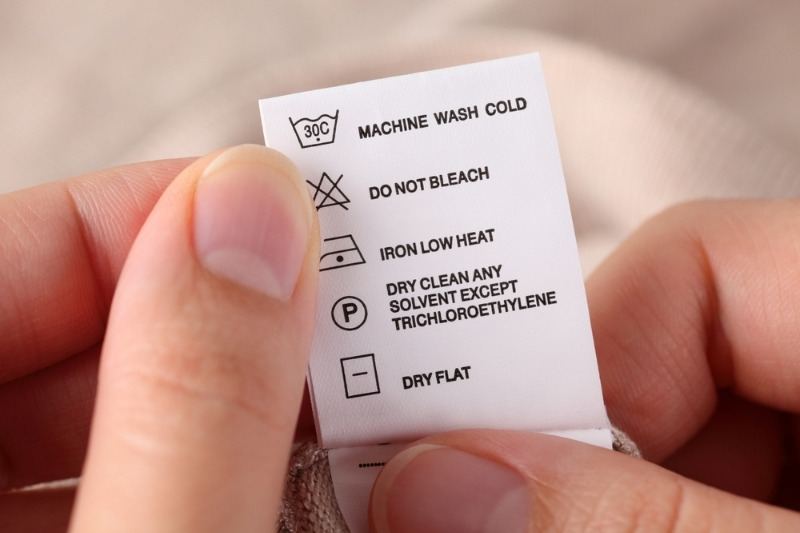
This method can be used to dry clean the following materials, polyester, cotton, Lycra, nylon and silk (but be extra careful and use the ‘hand wash’ setting). It should not be used to dry clean delicate materials, like wool.
Steps to follow:
- Check the tag on your items to see if they say ‘dry clean’, if they do, continue with this method. If you see ‘dry clean only’, stop what you’re doing and take your laundry to a professional cleaner in your area.
- Sort your laundry out so you’re only dry cleaning one specific material at a time, and your only dry cleaning items of similar colour.
- If it’s possible, add your delicate clothes to a mesh laundry.
- Add the items to the washing machine.
- Pop a measure of specialised delicate detergent into the appliance.
- Choose a cold wash.
- Pick the gentlest washing cycle – this could even be a ‘hand wash cycle’.
- If possible, tell the machine to run the shortest cycle it can do.
- Start the washing machine.
- When the cycle is done, hang laundry out to air dry or lay clothes flat on a surface to dry.
Note: If a garment is made up of several different materials, always work on the basis that the item is made from the most delicate material mentioned on the list. You should then dry clean the item based on what material that is.
DIY Dry Cleaning Method 4: Steam Cleaning ‘Dry Clean’ Clothes

If your delicate materials just need a quick spruce up you could spruce them up by running a steam cleaner over them.
Always test out the steamer before you use it on the main body of your clothing. And stick to using delicate products too. Remember that chemicals and delicate fabrics don’t mix well together!
How to Keep Clothes Clean for Longer
Here are a handful of tips that you can try out to keep your clothes fresher for longer. Of course, you should keep in mind that you will eventually need to wash your clothes, especially your undies!
- Pop deodorant and perfumes/aftershave on before putting your clothes on as this’ll prevent stains.
- Do your makeup before you get dressed.
- Steam clean clothes to give them a little lift.
- Get rid of stains immediately.
- Air your clothes at the end of the day.
- Stick your clothes out on the line to blow in the wind and sunlight.
- Don’t overfill your wardrobe with clothes, give your garments space.
- Choose an extra pungent detergent, so the smell of freshly cleaned laundry will stick around for longer on your clothes.
How Often Should You Dry Clean Clothes?
It’s difficult to give an exact answer to this question because there are so many external factors at play.
For example, if you’re a messy eater, you might have to treat stains and dry clean your clothes after a single wear. Or if it’s a hot time of year, your dresses/shirts might need to be cleaned more frequently because of odours and sweat patches.
On the flipside, if you keep your clothes clean and store them correctly, you might be able to get a few wears out of them.
It does also come down to personal preference.

Bethan has a passion for exploring, reading, cooking and gardening! When she’s not creating culinary delights for her family, she’s concocting potions to keep her house clean!



